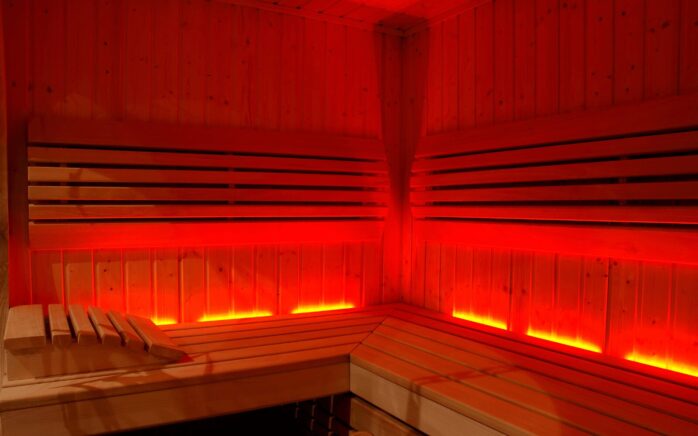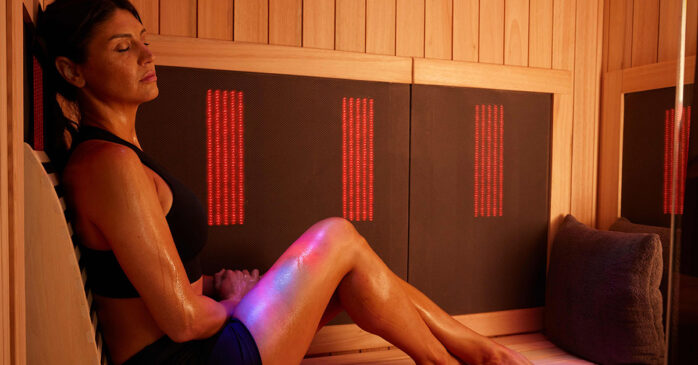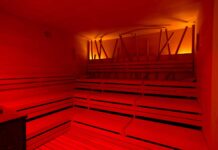
Saunas are no longer reserved for luxury spas. They’ve become a staple in personal wellness routines, used by people who want better recovery, deeper relaxation, and boosted immunity. But there’s a question many still ask: What makes a regular sauna different from an infrared sauna?
That answer matters if you’re thinking about investing in a sauna at home or looking to upgrade your wellness habits. Both serve a similar purpose—to heat your body and trigger beneficial responses—but the method, the feel, and the results vary in key ways.
Let’s clear the confusion and lay out every important difference between the two.
Heat Source and Method
A regular sauna uses heated elements to warm the air inside an enclosed space. You walk in, and your body heats up due to the surrounding hot air. It’s simple: hot rocks, hot air, high temperature.
Infrared saunas work very differently. They don’t heat the air around you. Instead, infrared panels emit light waves that penetrate your skin and heat your body from the inside out.
The Role of Infrared Technology
Infrared heat travels deeper into your tissues—often up to 1.5 inches beneath the skin. That’s why you start sweating even though the air around you doesn’t feel overwhelmingly hot.
At Pure Sweat Spa in Gilbert, AZ, the infrared sauna experience is more than heat therapy—it’s a tailored wellness session. The goal isn’t just to make you sweat, but to support detox, inflammation control, and recovery in a relaxing and non-intimidating environment.
The difference in heating method is the foundation for every other difference between the two sauna types.

Temperature and Comfort Levels
A regular sauna typically runs between 150°F to 195°F. The moment you step in, you feel the intensity. It’s hot, dry, and usually not something you can sit in for very long unless you’re used to it.
Infrared saunas operate between 120°F to 150°F, but don’t let the numbers fool you. You’ll still sweat—often even more than you would in a traditional sauna—but the sensation is gentler. The body absorbs the light and responds without being blasted by scorching air.
Most users report that infrared heat feels more tolerable. Sessions can last up to 40 minutes because the lower temperature reduces heat stress and discomfort.
Humidity and Air Quality
Regular saunas can be dry or steam-based. Some have stones that you can splash with water to create bursts of steam. This increases the humidity and makes the heat feel thicker and heavier.
Infrared saunas are dry. There’s no steam, no humidity, and no dramatic changes in air density. If you struggle with respiratory issues or don’t enjoy thick, moist air, infrared offers a much cleaner breathing environment.
That makes a major difference for people who are sensitive to high humidity or feel suffocated in traditional steam setups.
Health Benefits Compared
Both types of saunas help your body detox, relieve muscle tension, and reduce stress. But the way they deliver those benefits isn’t the same.

Traditional Sauna Benefits
- Improves circulation through intense heat exposure
- Relieves muscle soreness and joint stiffness
- Shortens post-exercise recovery
- Promotes deep relaxation
Infrared Sauna Benefits
- Penetrates deeper tissues to release toxins
- Stimulates metabolism and supports weight loss
- Eases inflammation and chronic pain
- Enhances skin tone and boosts collagen activity
- Supports mood, sleep, and immunity
Many users say that infrared sessions help them recover faster and sleep better afterward. Because the body’s core temperature increases more gradually, it feels more natural and restorative.

Installation and Maintenance
Building a regular sauna often requires more space, insulation, and ventilation. The high temperatures and humidity mean you need proper materials to avoid mold, warping, or heat leakage.
Infrared saunas are easier to install. Many models plug into a standard wall outlet. They’re usually lighter, require no plumbing, and take just a few minutes to heat up. Maintenance is also simpler, as there’s no steam or high moisture to manage.
If you’re considering a home setup, infrared often wins on convenience.
Time Commitment and Session Length
In a traditional sauna, your body is exposed to immediate, intense heat. That limits your session to shorter durations—usually 10 to 15 minutes at a time, followed by cooling periods.
Infrared saunas let you stay in longer. Many users enjoy 30 to 45-minute sessions, allowing for deeper relaxation and extended therapeutic effects. The time goes by fast because the experience feels more like a gentle body wrap than a heat shock.
That makes infrared better suited for people with low heat tolerance or chronic fatigue.
Detox Efficiency
Sweating is one of the body’s natural ways to eliminate toxins. But not all sweat is equal. Studies have shown that infrared-induced sweat contains more toxins like heavy metals, alcohol, and cholesterol compared to sweat from traditional heat exposure.
That doesn’t mean regular saunas don’t help. But if your goal is to flush out long-term chemical buildup or metabolic waste, infrared seems to have an edge.
It’s also worth noting that infrared saunas make you sweat sooner and longer—even though the air feels cooler.

Which One Should You Choose?
Start by asking yourself one question ─ What do you want out of your sauna sessions?
If you crave the classic spa experience with hot steam and fast, intense heat, the regular sauna delivers that traditional touch. But if you prefer longer sessions, deeper effects, and better comfort, infrared might be your match.
Factors to Consider
- Heat sensitivity ─ If you don’t handle high temperatures well, infrared offers a lower-temperature, high-sweat alternative.
- Space and installation ─ Infrared units are easier to install and fit in smaller spaces.
- Wellness goals ─ For pain relief, detox, skin, or inflammation, infrared often offers broader benefits.
- Budget ─ Traditional setups can cost more to build and maintain over time.
The choice isn’t about right or wrong. It’s about fit.
Final Thoughts
Regular and infrared saunas both serve a powerful role in personal wellness. They stimulate heat-induced stress relief, enhance circulation, and trigger detox pathways. But the experience, the setup, and the results are not the same.
If you want intensity and fast results, go with a regular sauna. If you want a gentler, more therapeutic option with longer sessions, choose infrared.
Take your time. Try both. See how your body reacts. Then make your decision based on how you feel afterward—not just what looks impressive on paper.






